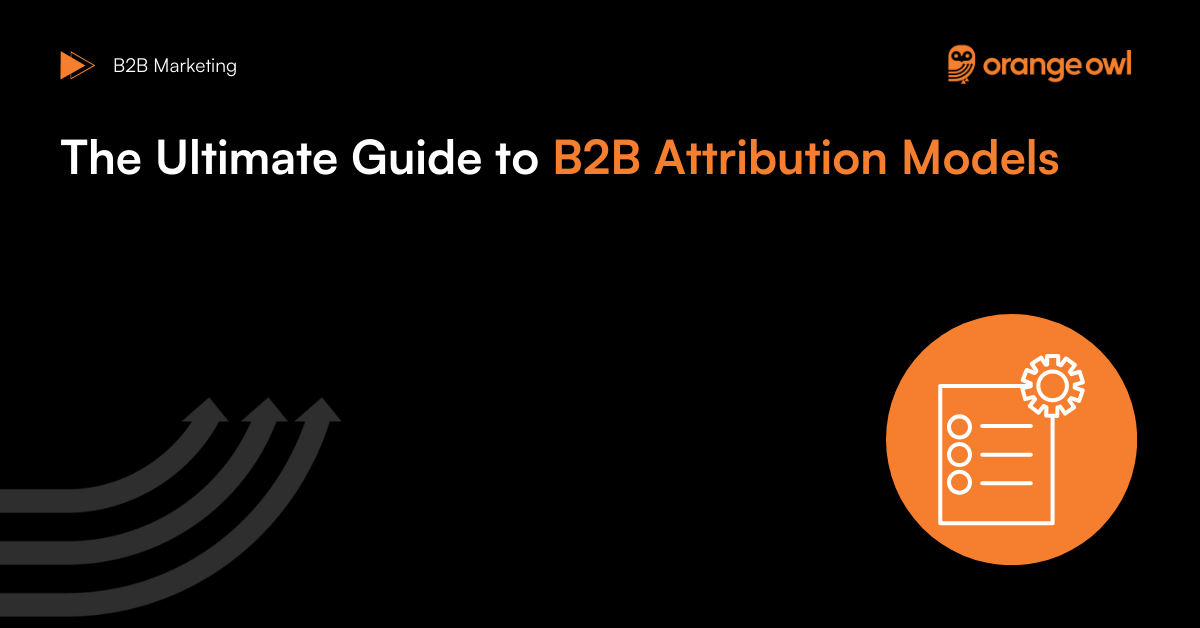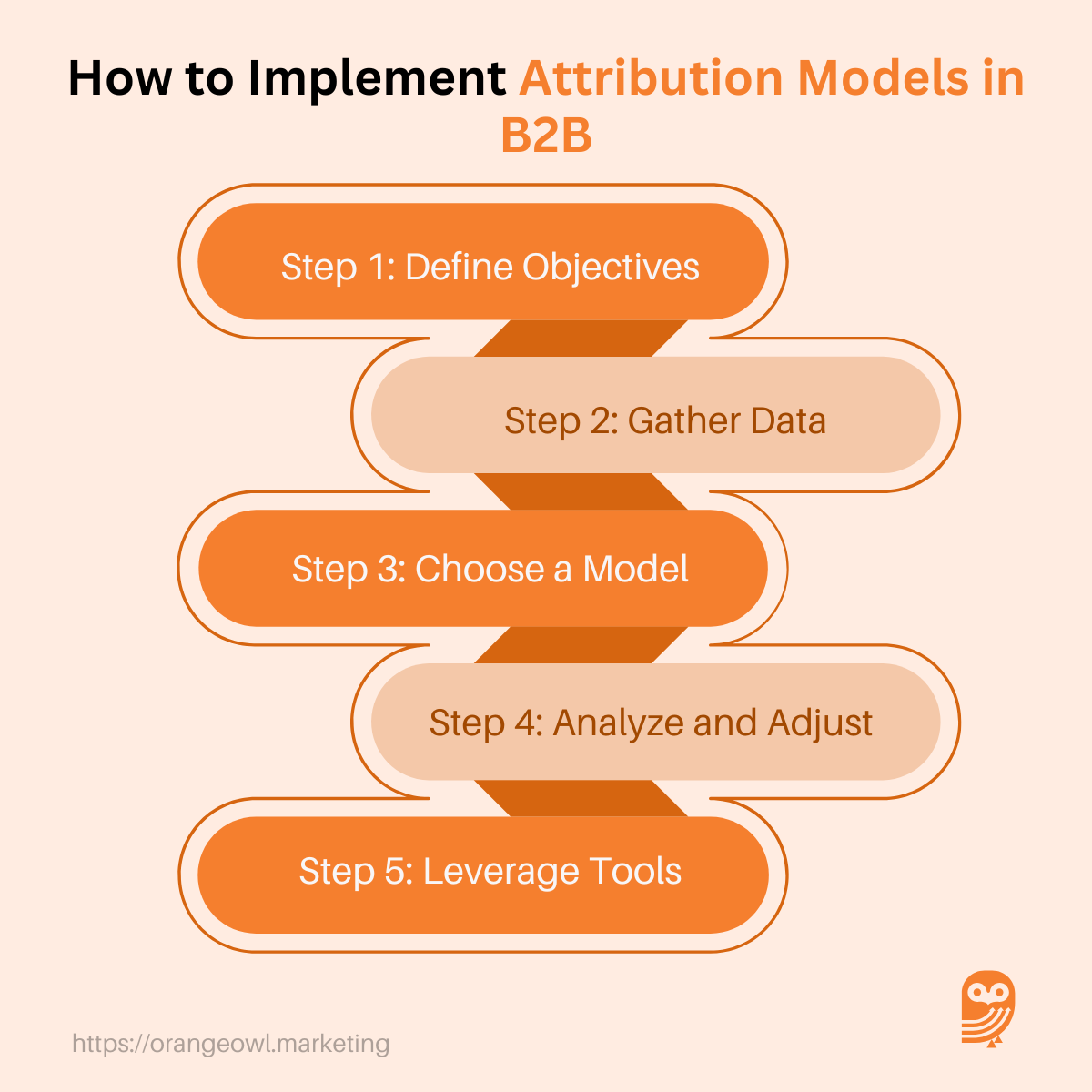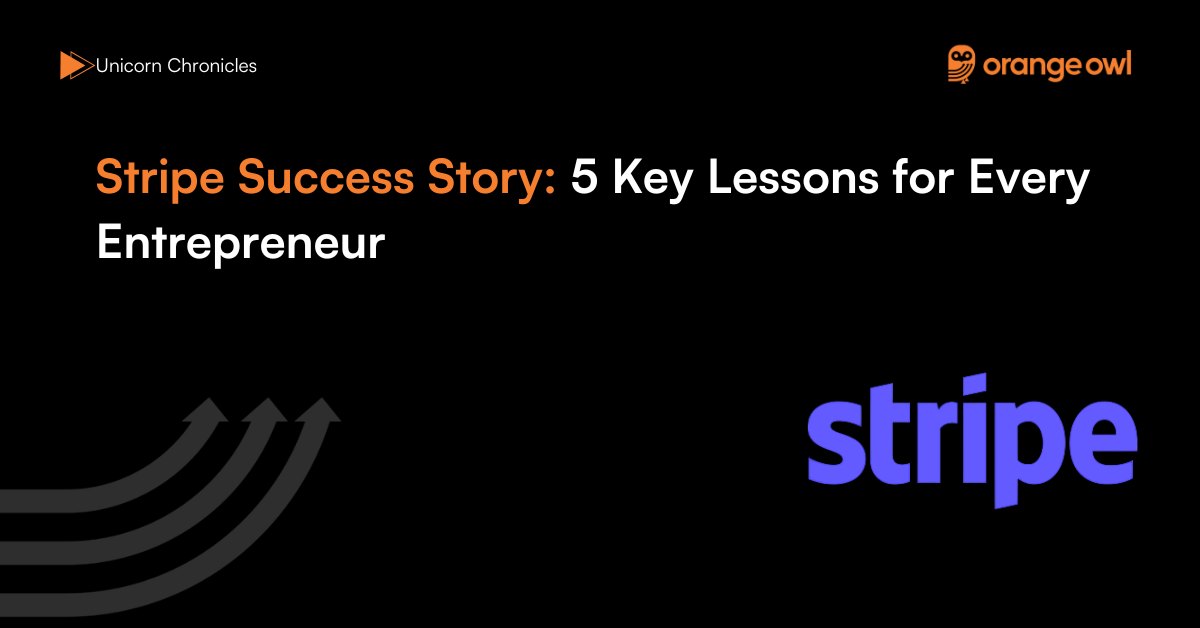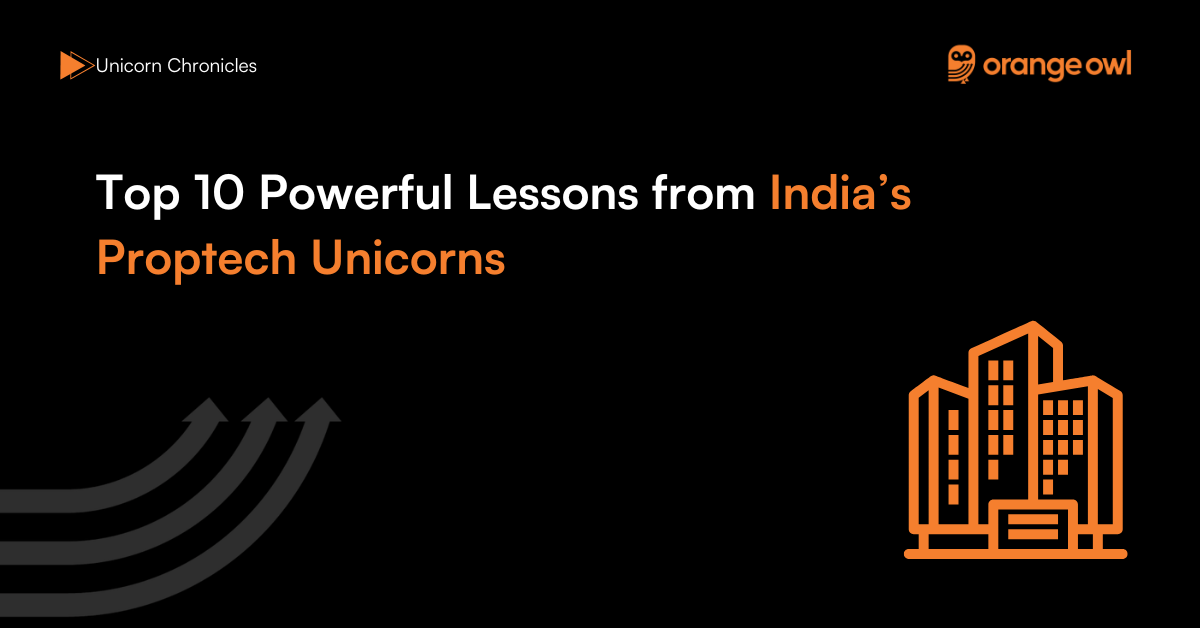The Ultimate Guide to B2B Marketing Attribution Models
Vivek Goel
December 30, 2024

Table of Contents
Introduction
In the dynamic and competitive world of B2B marketing, understanding the effectiveness of your campaigns is not just an advantage—it’s a necessity. Unlike B2C, where purchase decisions are often impulsive or immediate, B2B buying journeys are complex, involving multiple stakeholders, longer sales cycles, and numerous touchpoints. In such a landscape, attribution models play a pivotal role in unraveling which marketing efforts resonate most with decision-makers and influencers.
Marketing Attribution models are frameworks that help marketers assign credit to various interactions along the customer journey. They go beyond surface-level metrics to provide a granular view of which campaigns, channels, or touchpoints contribute most to driving conversions, nurturing leads, or closing deals. This insight empowers B2B marketers to make data-informed decisions, optimize budget allocation, and refine strategies to deliver maximum impact.
However, the application of marketing attribution models in B2B is not without its challenges. From integrating siloed data across platforms to tracking multi-stakeholder involvement in decisions, the complexities are many. Yet, these hurdles underline the importance of an effective attribution strategy that addresses the unique intricacies of B2B marketing.
This blog dives deep into the world of B2B marketing attribution models, examining their significance, types, and practical application within the B2B sphere. Whether you are a marketer aiming to refine your approach or a business leader seeking to enhance ROI, this guide will provide the insights you need to harness the power of attribution models in your B2B endeavors.
What Are B2B Marketing Attribution Models?
Marketing attribution models are frameworks used to determine how credit for conversions (such as sales, leads, or other desired actions) is distributed across various touchpoints in a customer’s journey. These models help businesses understand which channels, campaigns, or interactions are most effective in driving conversions, enabling them to allocate resources and optimize marketing strategies more efficiently.
Importance of Marketing Attribution Models in B2B
Marketing Attribution models play a critical role in analyzing and optimizing marketing strategies in the complex landscape of B2B. Here’s a detailed breakdown of their significance, illustrated with examples:
1. Resource Allocation
How it Helps: Attribution models identify which marketing channels, campaigns, or touchpoints drive the most conversions. This insight allows marketers to allocate budgets effectively, prioritizing high-performing channels while reducing investment in underperforming ones.
Example:
- A B2B software company uses a multi-touch attribution model to analyze a recent campaign.
- Insights reveal that:
- Paid ads on LinkedIn generate initial awareness.
- Email marketing nurtures leads through the decision-making process.
- Webinars drive final conversion.
Based on this data:
- The company increases the budget for LinkedIn ads and webinars.
- It reduces spending on an underperforming display ad campaign, optimizing resource utilization.
2. Performance Measurement
How it Helps: B2B buying journeys are often long and involve multiple touchpoints, including email campaigns, whitepaper downloads, webinars, and meetings. Attribution models enable businesses to evaluate the contribution of each touchpoint toward closing a deal.
Example:
- A linear attribution model is applied to a campaign with five key touchpoints:
- A Google search ad,
- A blog post,
- A whitepaper download,
- A demo request,
- A sales call.
Each touchpoint is given equal credit (20%) for the final conversion.
If the demo request consistently appears in conversions but earlier touchpoints don’t, the company may adjust its strategy to better engage leads during the awareness phase.
3. Customer Insights
How it Helps: Attribution models provide insights into how decision-makers and influencers engage with content. Understanding their behavior helps in crafting tailored strategies to effectively target different personas within the buying group.
Example:
- A manufacturing firm finds through a position-based attribution model that:
- C-suite executives interact more with case studies and ROI calculators.
- Procurement officers engage with pricing sheets and spec documents.
With this insight:
- The firm creates content tailored to each persona and positions it strategically within the buying journey, increasing engagement and conversions.
4. ROI Improvement
How it Helps: Attribution models guide better decision-making, ensuring marketing investments deliver maximum returns, particularly in B2B contexts where the sales cycle is long, and decisions involve multiple stakeholders.
Example:
- A tech company tracks its campaigns using a time-decay attribution model.
- Early touchpoints like blog posts and ads are given less weight.
- Touchpoints closer to conversion, such as demo requests and sales meetings, are weighted higher.
The analysis reveals that webinars have a high ROI because they’re attended just before leads convert.
- The company increases webinar frequency, leading to a 20% boost in conversions, enhancing overall ROI.
Types of B2B Marketing Attribution Models
Attribution models vary based on how credit is assigned to touchpoints. Here are the most common types, contextualized for B2B marketing:
1. First-Touch Attribution
This model gives 100% credit to the first touchpoint that initiated the customer’s journey.
- Advantages:
- Highlights the effectiveness of awareness campaigns targeting key decision-makers.
- Simple to implement and analyze.
- Disadvantages:
- Ignores subsequent interactions that influence buying decisions.
- May undervalue middle and bottom-funnel activities critical in B2B sales.
2. Last-Touch Attribution
Assigns full credit to the last touchpoint before conversion.
- Advantages:
- Focuses on the final action driving conversions, such as a demo request or sales call.
- Useful for identifying channels that close deals.
- Disadvantages:
- Neglects earlier interactions that nurture leads over time.
- Overemphasizes the final stage of the journey.
3. Linear Attribution
Distributes credit equally across all touchpoints in the customer’s journey.
- Advantages:
- Provides a balanced view of all interactions in multi-touch B2B campaigns.
- Suitable for understanding complex buying processes involving multiple stakeholders.
- Disadvantages:
- Fails to identify the most impactful touchpoints.
- Lacks granularity in performance insights.
4. Time-Decay Attribution
Gives more credit to touchpoints closer to the conversion, with diminishing credit for earlier interactions.
- Advantages:
- Reflects the increasing importance of recent interactions in long B2B buying cycles.
- Useful for time-sensitive campaigns targeting decision-makers.
- Disadvantages:
- May undervalue initial efforts to engage and educate leads.
5. Position-Based (U-Shaped) Attribution
Assigns 40% credit to the first and last touchpoints, with the remaining 20% distributed among middle interactions.
- Advantages:
- Recognizes the importance of both awareness and closing stages in B2B buying journeys.
- Balanced approach for multi-stakeholder interactions.
- Disadvantages:
- Arbitrary credit distribution may not fit all scenarios.
6. Data-Driven Attribution
Uses machine learning to analyze data and allocate credit based on the actual impact of each touchpoint.
- Advantages:
- Highly accurate and customizable to account for B2B buying complexities.
- Adapts to unique business needs and multiple decision-makers.
- Disadvantages:
- Requires significant data and resources.
- Complex to implement and interpret.
Choosing the Right B2B Marketing Attribution Model
Selecting the most effective marketing attribution model is crucial in optimizing your marketing strategy. The decision should be based on your business objectives, the complexity of the customer journey, and the quality of your data. Here’s a detailed explanation of key considerations, supported by examples:
1. Campaign Objectives
How It Helps: The choice of attribution model should align with the goals of your marketing campaign, whether the focus is on generating leads, nurturing prospects, or closing deals.
Example:
Goal: A B2B SaaS company aims to generate leads through awareness campaigns.
Attribution Model Used: First-touch attribution is applied, giving full credit to the first interaction (e.g., a LinkedIn ad).
Insights: The company learns that most leads originate from LinkedIn, so it increases its ad budget on this platform to maximize lead generation.
Goal: For a campaign aimed at closing deals, the same company shifts to a last-touch attribution model, giving credit to touchpoints like demo requests or sales calls, which directly precede conversions.
2. Channel Diversity
How It Helps: B2B marketing often involves multiple channels like webinars, email campaigns, content marketing, and social media ads. Choosing the right model ensures each channel’s contribution is fairly evaluated.
Example:
- A manufacturing company uses a linear attribution model across a multi-channel campaign:
- Initial interaction: A LinkedIn ad
- Nurturing: An email campaign offering whitepaper downloads
- Decision: A webinar showcasing product benefits
- Conversion: A sales meeting with a representative
Each touchpoint is assigned equal weight (25%), recognizing the importance of every channel in influencing the final decision. This model ensures balanced investment in LinkedIn ads, email campaigns, and webinars.
3. Data Availability
How It Helps: Attribution models require accurate data. The model should be chosen based on the depth and quality of available data, especially for long B2B sales cycles.
Example:
- A cybersecurity firm has access to comprehensive data through a robust CRM system.
- It adopts a time-decay attribution model to focus on the most recent interactions:
- Initial touchpoint: A blog post read six months ago
- Recent touchpoints: A demo request and a follow-up call last week
Since the CRM tracks engagement over time, the model gives higher weight to the demo request and call, ensuring the data reflects the long sales cycle and recent interactions leading to conversion.
4. Customer Journey Length
How It Helps: B2B customer journeys are typically long and involve multiple decision-makers and touchpoints. The attribution model should account for these complexities.
Example:
- A healthcare solutions provider uses a position-based attribution model:
- 40% of the credit is assigned to the first touchpoint (e.g., an email campaign).
- 40% is assigned to the final touchpoint (e.g., a product demo).
- 20% is distributed among all middle interactions (e.g., whitepaper downloads, case studies).
This approach reflects the importance of both initial outreach and closing activities, while also acknowledging the nurturing steps in between.
Benefits of B2B Marketing Attribution Models
Attribution models provide valuable insights that drive better marketing decisions. Here are some of the key benefits:
1. Enhanced Decision-Making
By understanding which touchpoints deliver the best results, B2B marketers can make informed decisions about where to invest resources.
2. Optimized Marketing Spend
Attribution models identify underperforming channels, enabling B2B marketers to reallocate budgets to higher-performing areas.
3. Improved Customer Understanding
Attribution analysis reveals how B2B decision-makers and influencers interact with content, allowing for more personalized strategies.
4. Increased ROI
Focusing on high-impact touchpoints ensures that every marketing dollar is spent effectively, leading to higher returns in lengthy B2B sales cycles.
Challenges in Marketing Attribution Modeling for B2B
Despite their benefits, attribution models also present challenges that B2B marketers need to address:
1. Data Silos
Fragmented data across platforms can hinder the accuracy of attribution models. Integrating CRM, marketing automation tools, and analytics platforms is essential for comprehensive analysis.
2. Cross-Device and Multi-Stakeholder Tracking
With multiple stakeholders involved in B2B decisions, tracking their journey accurately across devices and channels becomes complex.
3. Privacy Concerns
Regulations like GDPR and CCPA impose restrictions on data collection and usage, affecting attribution analysis in the B2B space.
4. Model Limitations
Each attribution model has its strengths and weaknesses, and no single model fits all B2B scenarios. Customization is often required.
How to Implement B2B Marketing Attribution Models
Step 1: Define Objectives
Identify the specific goals of your attribution analysis, such as increasing ROI, optimizing campaigns, or understanding customer behavior across touchpoints.
Step 2: Gather Data
Collect data from all relevant channels and touchpoints, including CRM systems, marketing automation platforms, and analytics tools. Ensure data consistency and accuracy.

Step 3: Choose a Model
Select an attribution model that aligns with your objectives and data availability. For complex B2B buying journeys, consider data-driven models for deeper insights.
Step 4: Analyze and Adjust
Regularly review attribution data and refine your strategies based on insights gained. Incorporate feedback from sales teams for a holistic view.
Step 5: Leverage Tools
Use advanced tools and platforms like Google Analytics 360, HubSpot, Marketo, or Adobe Analytics to streamline attribution analysis in B2B contexts.
Future of Marketing Attribution Models in B2B
As technology evolves, so do attribution models. Here are some trends shaping their future:
1. AI and Machine Learning
The integration of AI will enhance data-driven attribution by offering deeper insights and predictive analytics tailored to B2B scenarios.
2. Unified Measurement
Emerging solutions aim to provide a holistic view of marketing performance across all B2B channels and stakeholders.
3. Privacy-Centric Attribution
Models will adapt to stricter privacy regulations by focusing on aggregated and anonymized data.
Conclusion
As the B2B marketing landscape continues to evolve, the importance of understanding what drives success has never been greater. Attribution models offer a critical lens through which businesses can analyze their marketing efforts, identifying not only which channels are effective but also how each touchpoint contributes to the broader customer journey. In a world where data-driven decisions are key to staying competitive, these models provide the roadmap for smarter resource allocation and strategy optimization.
Choosing the right attribution model is not a one-size-fits-all decision. Each B2B organization must consider factors such as its sales cycle length, the diversity of its marketing channels, and the availability of data. While simpler models like first-touch or last-touch attribution may suit businesses just starting their journey, more sophisticated options like data-driven attribution can unlock deeper insights for those ready to dive into complex analysis.
However, the journey doesn’t end with selecting a model. Implementing it effectively requires collaboration across marketing and sales teams, robust data collection systems, and the use of advanced analytics tools. Moreover, the challenges posed by data privacy regulations and cross-device tracking demand that businesses continuously adapt and innovate their attribution strategies.
Looking to the future, the integration of artificial intelligence and machine learning promises to redefine the capabilities of attribution models. These technologies will enable predictive analytics, providing even greater clarity on the impact of marketing efforts in multi-stakeholder B2B environments. At the same time, a focus on privacy-centric attribution will ensure compliance with evolving regulations without compromising on insight quality.
In conclusion, mastering attribution models is not just about measuring success—it’s about creating it. By leveraging these frameworks, B2B marketers can not only improve their strategies but also foster deeper connections with their target audiences, ultimately driving sustainable growth and achieving long-term success. Now is the time to embrace attribution as a cornerstone of your B2B marketing strategy.
Frequently Asked Questions(FAQs) on B2B Marketing Attribution Models
B2B attribution models analyze and assign credit to marketing touchpoints across a longer and more complex sales cycle compared to B2C models. In B2B, the journey often involves multiple stakeholders, higher-value deals, and various decision-making stages. B2C models typically focus on quicker, individual transactions and simpler journeys.
Selecting the right model ensures that marketing efforts align with business objectives. A suitable model provides accurate insights into how marketing activities influence complex buyer journeys, helping businesses allocate budgets effectively, optimize campaigns, and ultimately increase ROI.
Multi-touch attribution credits multiple interactions throughout the customer journey, offering a more comprehensive view of how touchpoints influence conversions. For B2B, where decisions involve multiple channels and stakeholders, this approach highlights the combined impact of all touchpoints, enabling better strategic planning.
CRM systems centralize customer data, track interactions, and connect marketing touchpoints to specific leads or accounts. They play a critical role in B2B attribution by consolidating data from various sources, ensuring accurate tracking, and aligning marketing and sales efforts.
Challenges include data silos, difficulty tracking multi-stakeholder journeys, cross-device behavior, and regulatory constraints like GDPR. Additionally, limited budgets or resources may make advanced models harder to implement effectively.
Multi-touch attribution (MTA) is a method of assigning value to each touchpoint a customer interacts with throughout their buying journey. Unlike single-touch attribution, which credits only one touchpoint (e.g., first click or last click), MTA evaluates the contribution of every interaction, from initial awareness to final conversion. This approach is especially important in B2B, where the sales cycle is longer and involves multiple decision-makers. MTA helps marketers understand which channels and touchpoints are most influential in converting leads, enabling them to allocate resources more effectively and optimize their marketing strategies.
AI enhances B2B attribution by analyzing vast datasets, identifying patterns, and providing predictive insights. Machine learning algorithms can evaluate the impact of individual touchpoints more accurately and adapt models to evolving customer behaviors, especially in complex buying processes.
Popular tools for B2B attribution include Google Analytics 360, Marketo, HubSpot, and Salesforce. These platforms integrate with CRM systems and other marketing tools to provide detailed insights, automate reporting, and facilitate advanced attribution analysis.
Yes, attribution models provide a unified framework to evaluate marketing efforts’ contribution to sales. By highlighting the touchpoints that generate the most valuable leads or close deals, both teams can collaborate more effectively, ensuring alignment on shared goals.
Time-decay attribution assigns more weight to touchpoints closer to the conversion, making it ideal for B2B campaigns with long sales cycles. It reflects the growing importance of nurturing and closing stages, ensuring that efforts closer to decision-making receive appropriate credit.


